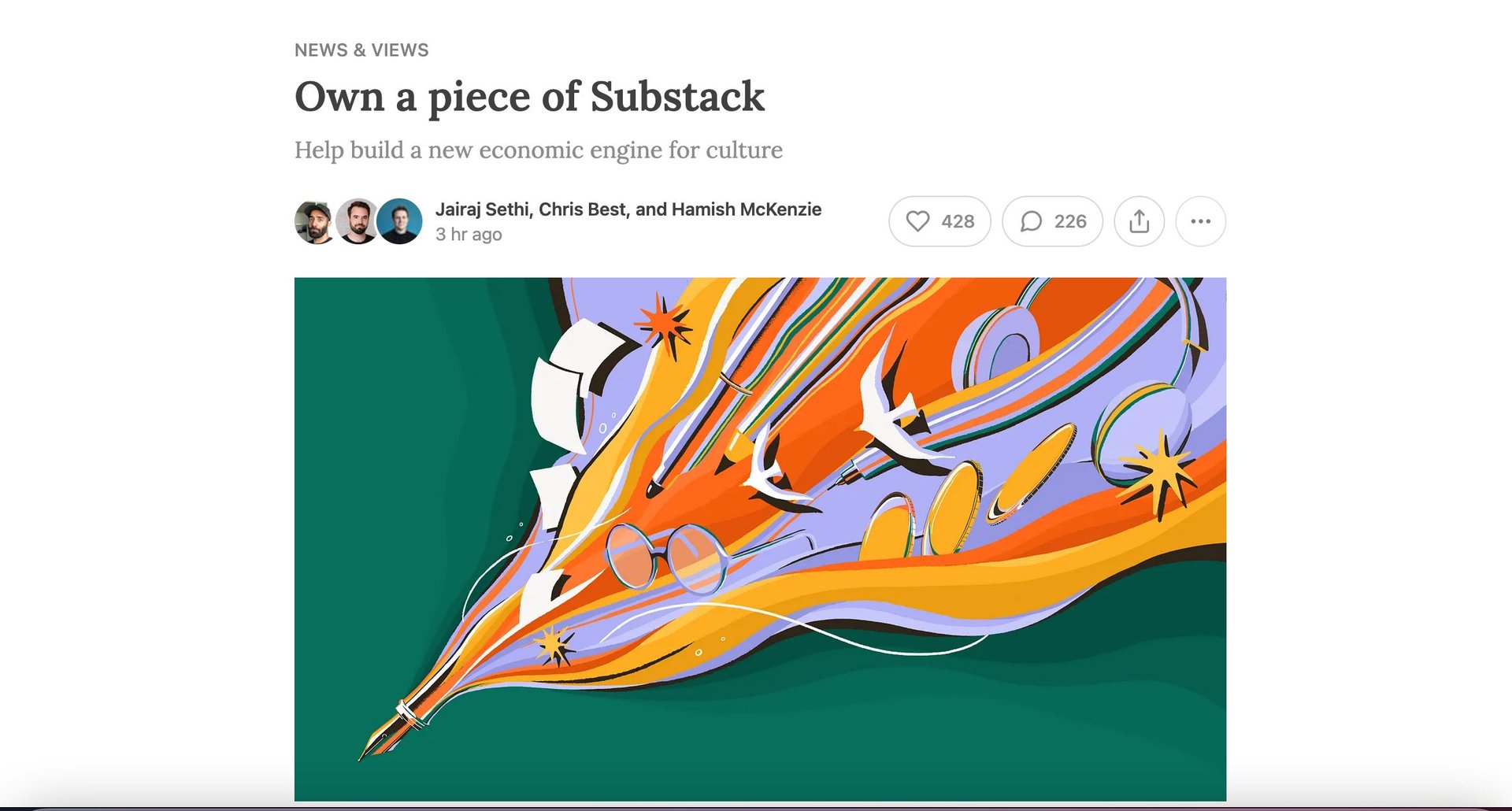Substack is fundraising directly from its writers
The newsletter company seeks $5 million in crowdfunding from those who depend most on the platform

Newsletter company Substack, which reportedly struggled to fundraise last year amid a broader downturn in the tech market, wants its next round of financing to come directly from its pool of writers.
Substack most recently raised money in 2021 in a $65 million Series B round led by venture capital firm Andreessen Horowitz, at a nearly $600 million valuation. It’s now seeking $5 million directly from its writers, who publish free or paid newsletters through the platform, to join in the action and get equity in the company they rely upon.
For a company like Substack, $5 million isn’t much runway. But it could give writers—who already rely on Substack to pay their bills—enough equity to spout the service’s gospel across the internet media landscape.
“We’re doing this because the dynamics of a platform like Substack change if the people who are building their businesses on it are owners of it too,” the co-founders wrote on their website. “And we’re doing it because it not only provides something good for our company but also presents an opportunity for the people who use Substack to participate in the benefits that come from building this network—including the financial upside.”
Substack is accepting investments of $100 or more through the crowdfunding platform Wefunder. At the time of this writing, it had already gathered about $2.4 million.
Some writers are already investing
Eric Newcomer, a former Bloomberg reporter who has amassed hundreds of thousands of subscribers for his eponymous newsletter about startups and venture capital, pledged $5,000, which he called a “minuscule sum” in a post explaining his decision to invest.
“While I already have plenty of financial exposure to Substack’s performance just by dint of running my business on Substack’s platform, I’m eager to have a chance to show my support,” Newcomer wrote, saying the 10% cut that Substack takes from his subscription revenue is his real investment in the company.
Newcomer also mentioned another upside to investing: “As part of raising the crowdfunding money, Substack will have to reveal its audited financials.”
The writer Bill Bishop contributed $25,000 on top of a previous $100,000 investment, Axios reported, noting that Bishop is “leading the round” that includes advice writer Heather Havrilesky and entrepreneur and business writer Anthony Pompliano.
An SEC rule change made this crowdfunding possible
Substack says it originally wanted to engage writers as part of its Series B round, but that proved difficult at the time. However, in 2021, the US Securities and Exchange Commission’s regulation crowdfunding rules changed. The SEC increased the limit at which startups can crowdfund without registering with it from $1.07 million to $5 million in a given 12-month span.
Helen Tobin, a spokesperson for Substack, said that because of the “positive response” the announcement generated, it has changed its fundraising goal from an initial $2 million to $5 million, the legal maximum under the new SEC rules.
Substack does, of course, offer a caveat for writers looking to double down on their reliance on the company. “We want to make it clear, however, that just because you can invest in Substack, it doesn’t mean you should,” the co-founders cautioned. “Investments are risky.”
